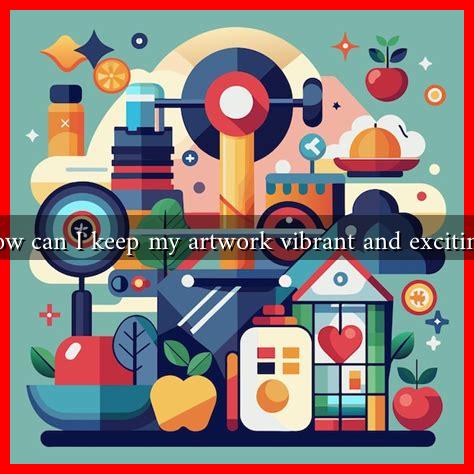-
Table of Contents
How Can I Keep My Artwork Vibrant and Exciting?
Creating artwork that captivates and engages viewers is a challenge that many artists face. Whether you are a painter, sculptor, or digital artist, maintaining vibrancy and excitement in your work is essential for both personal satisfaction and audience engagement. This article explores various strategies to keep your artwork fresh and dynamic, ensuring that it continues to resonate with viewers.
Understanding Color Theory
Color is one of the most powerful tools in an artist’s arsenal. Understanding color theory can significantly enhance the vibrancy of your artwork. Here are some key concepts to consider:
- Complementary Colors: Using colors that are opposite each other on the color wheel can create striking contrasts that draw the eye.
- Analogous Colors: Colors that are next to each other on the wheel can create harmony and depth.
- Color Temperature: Warm colors (reds, oranges, yellows) can evoke energy and excitement, while cool colors (blues, greens, purples) can create calmness and serenity.
For example, the works of Vincent van Gogh often utilized complementary colors to create dynamic compositions that are both vibrant and emotionally charged. His famous painting “Starry Night” showcases this technique beautifully.
Experimenting with Different Mediums
Another way to keep your artwork exciting is to experiment with various mediums. Each medium has its unique characteristics and can produce different effects:
- Watercolor: Known for its translucency, watercolor can create soft, ethereal effects.
- Acrylics: Fast-drying and versatile, acrylics can mimic the appearance of oil paints or watercolors depending on how they are used.
- Mixed Media: Combining different materials (e.g., collage, fabric, and paint) can add texture and depth to your work.
Artists like Robert Rauschenberg have famously used mixed media to create vibrant, layered pieces that challenge traditional boundaries of art.
Incorporating Movement and Rhythm
Movement and rhythm can add excitement to your artwork. Consider the following techniques:
- Dynamic Composition: Use diagonal lines and asymmetrical balance to create a sense of movement.
- Repetition: Repeating shapes or colors can create a rhythm that guides the viewer’s eye through the piece.
- Gesture Drawing: Incorporating fluid, expressive lines can convey energy and motion.
For instance, the works of Jackson Pollock exemplify movement through his drip painting technique, which captures the energy of the moment and invites viewers to experience the artwork dynamically.
Engaging with Your Audience
Art is not created in a vacuum; engaging with your audience can provide valuable feedback and inspiration. Here are some ways to connect:
- Social Media: Platforms like Instagram and Pinterest allow artists to share their work and receive immediate feedback.
- Art Shows and Exhibitions: Participating in local art events can help you gauge audience reactions and gather insights.
- Workshops and Classes: Teaching others can inspire new ideas and techniques that you can incorporate into your own work.
According to a survey by the National Endowment for the Arts, artists who engage with their audience report higher levels of satisfaction and creativity in their work.
Continuous Learning and Adaptation
The art world is ever-evolving, and staying updated with trends and techniques can keep your work relevant and exciting. Consider the following:
- Online Courses: Websites like Skillshare and Coursera offer courses on various art techniques and styles.
- Art Books and Journals: Reading about contemporary artists and movements can inspire new ideas.
- Networking: Connecting with other artists can lead to collaborations and new perspectives.
By continuously learning, you can adapt your style and techniques, ensuring that your artwork remains vibrant and engaging.
Conclusion
Keeping your artwork vibrant and exciting requires a combination of understanding color theory, experimenting with different mediums, incorporating movement, engaging with your audience, and committing to continuous learning. By implementing these strategies, you can create artwork that not only captivates viewers but also fulfills your creative aspirations. Remember, art is a journey, and embracing change and experimentation is key to keeping that journey exciting.
For more insights on enhancing your artistic skills, consider visiting Artsy for resources and inspiration.

